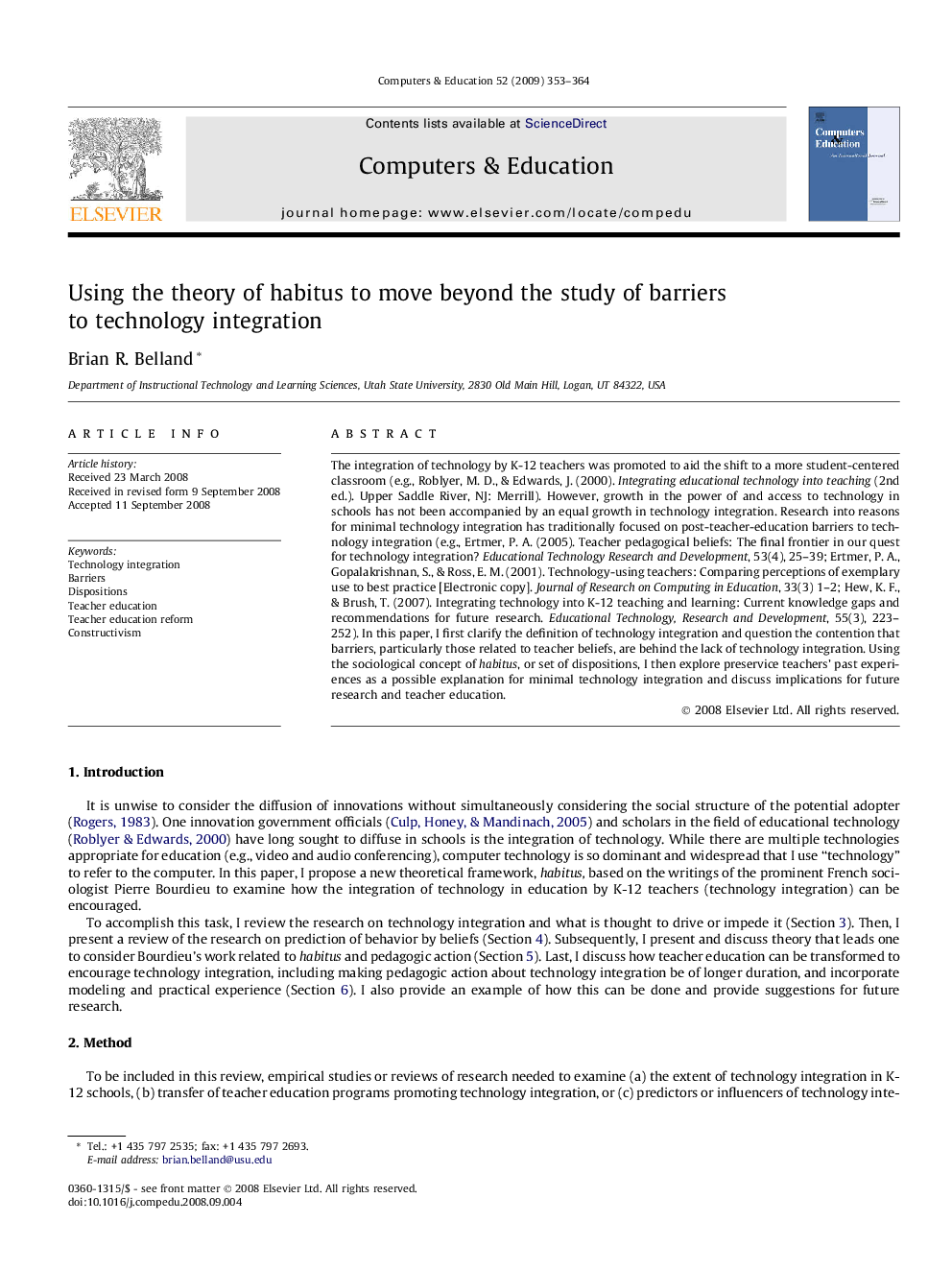| کد مقاله | کد نشریه | سال انتشار | مقاله انگلیسی | نسخه تمام متن |
|---|---|---|---|---|
| 349066 | 618211 | 2009 | 12 صفحه PDF | دانلود رایگان |

The integration of technology by K-12 teachers was promoted to aid the shift to a more student-centered classroom (e.g., Roblyer, M. D., & Edwards, J. (2000). Integrating educational technology into teaching (2nd ed.). Upper Saddle River, NJ: Merrill). However, growth in the power of and access to technology in schools has not been accompanied by an equal growth in technology integration. Research into reasons for minimal technology integration has traditionally focused on post-teacher-education barriers to technology integration (e.g., Ertmer, P. A. (2005). Teacher pedagogical beliefs: The final frontier in our quest for technology integration? Educational Technology Research and Development, 53(4), 25–39; Ertmer, P. A., Gopalakrishnan, S., & Ross, E. M. (2001). Technology-using teachers: Comparing perceptions of exemplary use to best practice [Electronic copy]. Journal of Research on Computing in Education, 33(3) 1–2; Hew, K. F., & Brush, T. (2007). Integrating technology into K-12 teaching and learning: Current knowledge gaps and recommendations for future research. Educational Technology, Research and Development, 55(3), 223–252). In this paper, I first clarify the definition of technology integration and question the contention that barriers, particularly those related to teacher beliefs, are behind the lack of technology integration. Using the sociological concept of habitus, or set of dispositions, I then explore preservice teachers’ past experiences as a possible explanation for minimal technology integration and discuss implications for future research and teacher education.
Journal: Computers & Education - Volume 52, Issue 2, February 2009, Pages 353–364